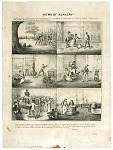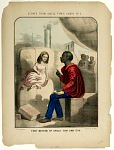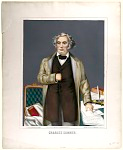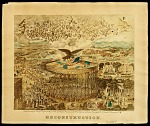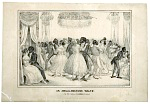Brown, John Currier & Ives
Description
In 1859, John Brown launched his infamous raid on the federal arsenal at Harper’s Ferry, which he hoped would trigger a widespread slave revolt. His attempts at seizing the arsenal were quickly thwarted by U.S. Marines led by the future Confederate general, Robert E. Lee. After his capture, Brown was tried and executed by hanging on December 2, 1859.This print from around the time of Brown’s execution presents the imposing figure of the abolitionist, seated cross-legged in a chair, gazing out of the image towards the viewer. In his right hand, the he clutches a copy of the New York Tribune, the newspaper that had provided constant coverage of Brown’s exploits, trial, and death. Hanging above his right shoulder is a map of Kansas, signifying Brown’s connection to the Bleeding Kansas crisis, which erupted after the Kansas-Nebraska Act of 1854.Designed to open the western territories to settlement, the Kansas-Nebraska Act employed the doctrine of popular sovereignty to allow the people living in Kansas and Nebraska to vote these states into the Union as either slave or free. This resulted in the outbreak of violence between pro-slavery and anti-slavery factions in the Kansas Territory, earning it the nickname “Bleeding Kansas.” This print depicts scenes of violence by pro-slavery “border ruffians” from Missouri who have crossed into Kansas against the free-soil settlers living there. John Brown himself traveled to Kansas to protect anti-slavery settlers there. After pro-slavery militants ransacked the town of Lawrence, Kansas, followers of Brown murdered five supporters of slavery...
Paper (Overall Material)Ink (Overall Material)
Harry T. Peters "America on Stone" Lithography Collection


